The beginning of the First World War: the situation on the border with Austria-Hungary and the Black Sea. Pogrom of belgium
They were rather tough, although the horrors of the Second World War were still far away. They made contributions, took hostages, sent the men to the camps. It should be noted that many Poles then sympathized with the Russians - the Germans were the common ancient enemy, the enmity was forgotten. In addition, part of the Polish intelligentsia dreamed that after the war and the victory over Germany and Austria-Hungary, the ancient Polish lands would be liberated, which would enter the Kingdom of Poland. Poland will get more independence under the supreme power of the Russian emperor (following the example of the Grand Duchy of Finland). Volunteers poured into the Russian cavalry units that were moving towards the Germans. Among them was another hero of the future Great Patriotic War - 17-year-old Konstantin Rokossovsky, who, having added two years, 2 of August entered the 5 th Kargopol Dragoon Regiment of the 5 th Cavalry Division. Already 8 August, Rokossovsky distinguished himself during reconnaissance near the village of Yastrzhem. He dressed in civilian clothes, went to the town, and when he returned, he reported that there was a cavalry regiment and a company of cyclists in it. When the enemy moved across the river Pilica, they were met with fire and turned to flight. Rokossovsky was awarded the St. George Cross of the 4 degree and was promoted to the corporal.
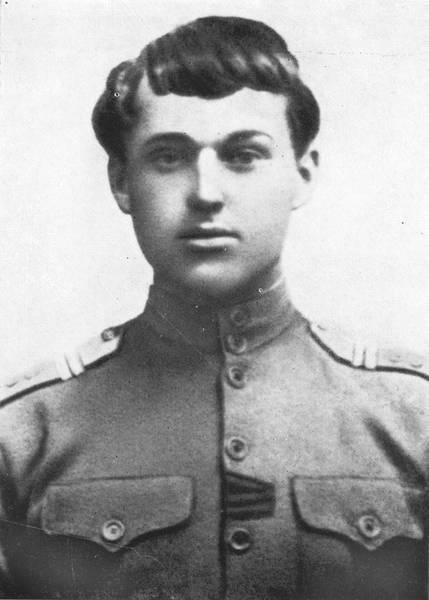
Dragoon K.K. Rokossovsky in 1916 year.
Border with Austria-Hungary
On the border with the Austro-Hungarian Empire, it was quiet. Vienna concentrated its troops and declared war on Russia only on 6, although Germany entered the war on August 1. In Berlin, they even started to get nervous. Russia also waited and did not declare war on the Austrians. France and Britain entered the war with Austria-Hungary, respectively 11, 12 August, only after the diplomatic pressure of St. Petersburg.
The troops of Austria-Hungary were the first to break the state border - they crossed the border river Zbruch in the band of the 8 Army General of the cavalry Alexei Brusilov. The defense here kept 2-I-Cossack division. The Austrians brought down the posts, and the head of the division was taken aback, but the initiative was shown by the brigade commander Pavlov. He located the 4 infantry company of the division in the town of Gorodok, reinforced it with machine guns and artillery battalion, the brigade was located on the flanks. The Austrian cavalry, without intelligence, rushed into the settlement. Its first rows were simply destroyed by fire, the Cossacks struck the flank. The enemy rolled back over the river Zbruch.
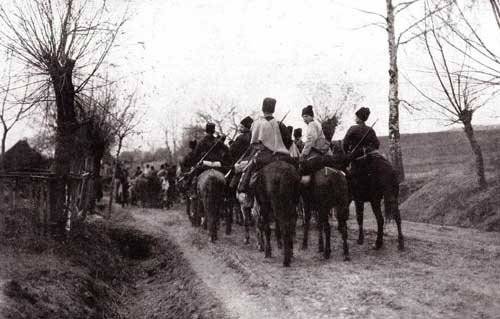
Russian Cossacks enter the village. Galicia.
Situation on the Black Sea
The Black Sea Fleet was forced to take precautions. The Russian Foreign Ministry and intelligence closely monitored internal political events in the Ottoman Empire, reported on the state of Turkish fleet, the army, so that the commander of the Black Sea Fleet, Admiral Andrei Augustovich Eberhard, could correctly respond to the actions of a possible enemy.
1 August Ebergard received instructions from St. Petersburg to avoid aggressive actions that could cause war. The fleet could begin hostilities only by decree of the Supreme Commander Grand Duke Nikolai Nikolaevich or the message of the Russian ambassador in Istanbul about the beginning of the war.
The Black Sea Fleet had complete superiority over the Turkish naval forces in combat training, it included: 6 old type battleships (dodreadnotes), 2 Bogatyr type cruisers, 17 destroyers, 12 destroyers, 4 submarines. 4 was built yet powerful battleship of the modern sample (dreadnought). The Turks had all 2 battleships, 2 armored cruisers, 8 destroyers. The situation was aggravated by the fact that the Turkish fleet was almost completely absent combat training, the ships were in poor condition. At the beginning of 1914, the withdrawal of the Turkish Navy from the Bosphorus to the battle with the Russian fleet seemed fantastic.
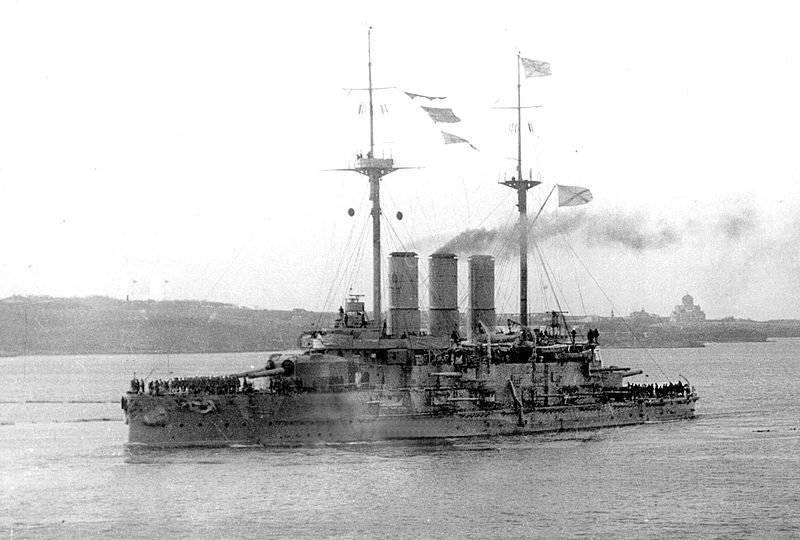
The flagship of the Black Sea Fleet battleship "Evstafy" in the roads of Sevastopol, 1914 year.
On August 2, Admiral Ebergard reported to St. Petersburg about intercepted radio messages stating that a German-Turkish alliance treaty had been signed. 3 August diplomatic mission and intelligence reported on the beginning of the mobilization of the Ottoman Empire. On August 5, the head of the German military mission in Turkey, Otto Lyman von Sanders, visited the Erzerum fortress. On August 10, from the Mediterranean Sea, two German cruisers entered the Black Sea straits - the heavy Geben and the light Breslau. The cruisers and their crews became part of the Turkish Navy. This changed the balance of power in the Black Sea. Istanbul got the opportunity to fight at sea. The commander of the German Mediterranean Division, Rear Admiral Wilhelm Souchon, led the combined German-Turkish Navy. The Goeben was more powerful and faster than any old Russian battleship of the old type, but together the Russian battleships could destroy it.
Istanbul at that time was trying to cheat and deceive Russia by hiding its plans for a war with it. On August 5, the Minister of War Enver-Pasha invited the Russian military agent Leontyev to conclude an alliance of Turkey and Russia. He reported that Istanbul was allegedly not bound by any military agreements and spoke of the possibility of creating a bloc directed against Austria-Hungary and the Balkan countries that were opposed to Russian policy. He promised to withdraw the troops from the Russian-Turkish border, at the first opportunity to expel the German officers. For this, the Turks wanted to get the Aegean Islands, Western Thrace. Russia was supposed to help abolish “capitulations (regime of benefits for foreigners). Negotiations continued until August 15, the Russian ambassador M. Girs and military agent M. Leontyev even suggested that Foreign Minister Sergei Sazonov accept the proposals of the Turks.
Istanbul, playing this game, wanted to drive a wedge between the allies: the capitulation regime concerned the interests of Britain and France in the Ottoman Empire. The Aegean Islands and Western Thrace belonged to Greece and Bulgaria. Thus, the Greeks and Bulgarians were pushed into the camp of the enemies of Russia, the Turks provided a calm rear in the Balkans and could concentrate all forces in the Caucasus. Therefore, Sazonov didn’t peck at this bait, moreover, in St. Petersburg they knew about the conclusion of a German-Turkish treaty.
At the same time the Turks traded with Berlin. Enver negotiated with German Ambassador Hans Wangenheim. The Turks asked Germany to confirm the receipt after the war of the Aegean Islands, parts of Thrace, Kars, Ardahan, Batum (belonged to Russia). Germany assured Istanbul that its eastern border would be corrected so that there was "the possibility of contact with the Muslim elements of Russia." The German ambassador told Enver that, having received the Caucasus, Turkey "will open the road to Turan." To encourage the Turks, 10 August, Istanbul was granted a loan of 100 million gold francs. On the same day Enver ordered the German cruisers pursued by the British squadron to be flown into the Dardanelles. Then they decided the question of what to do with the German ships. Under international treaties, the Turks were to intern (to forcibly detain, to deprive of freedom of movement) Germanic cruisers. After consulting with Berlin, Istanbul “bought” the ships.
15 August Leontiev from his agents received information that Turkish troops began to transfer from Smyrna, Anatolia, Syria to the Caucasus direction. St. Petersburg is trying to prevent Turkey from entering the war - Sazonov offers Paris and London to make a joint statement. It reports that the attack of the Turks on one of the three great powers would mean that the entire Entente was declared a war, provide Porte with security guarantees while Istanbul remains neutral and demand the demobilization of the army. And for neutrality, after the war, to give Istanbul all German concessions and enterprises on its territory. On the same day, the Turks gave their navy under the command of the Germans, the British naval mission was forced to leave the Ottoman Empire, the British occupied the place of the German officers. September 9 Istanbul unilaterally abolished the surrender regime, this caused a protest of European countries.
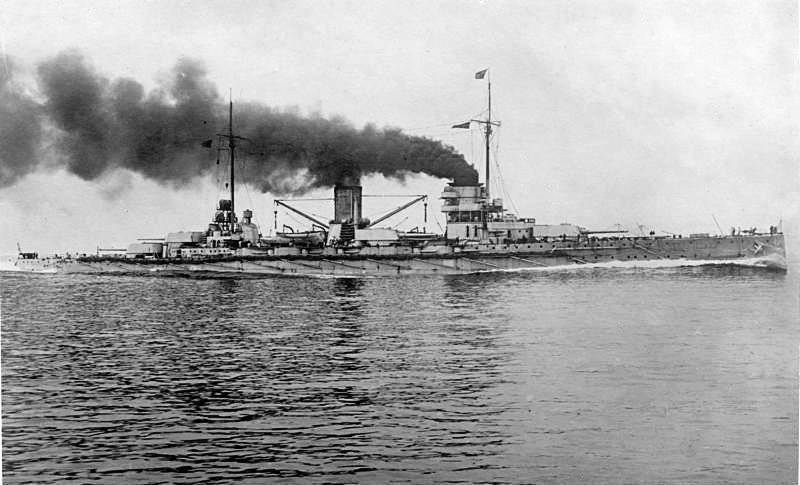
The Göben battle cruiser.
The beginning of hostilities on the Western Front
The mood in Germany reigned victorious. They were going to win the war before the “autumn leaf fall”, before the active entry into the war of Russia and Britain. It looks like the situation of the beginning of the Great Patriotic War, which is better known in Russia, to the plan of a “blitzkrieg”.
The 7 armies were deployed against France. The 1, 2, 3 armies (16 corps, about 700 thousand people) were supposed to strike through Belgium. The 4 and 5 armies (the central grouping of 11 corps, roughly 400 thousand people) prepared to strike through the Ardennes to support the northern army group. The left-flank 6-i and 7-i armies (8 corps, 320 thousand people) had to bind the opposing forces of the French (1-th and 2-th army) in order to prevent them from being transferred to the north.
The French 1 and 2 armies (10 corps, more than 600 thousand people) were preparing for an offensive through Alsace and Lorraine. The 3 and 5 armies (8 corps, 450 thousand) were to attack through the Ardennes, the 4 French army (3 corps, 125 thousand) were in the second line.
From the fortress Maubezh to the sea, the border of France was almost not covered by anything. True, there should have been British troops, but the issue was not fully resolved. Part of the British military-political leadership believed that in this case the British army would become an "appendage" of the French armed forces, which is unacceptable. Other options were proposed - to land troops in East Prussia, after conducting a landing operation, for joint operations with the Russian armies or in Belgium, in order to fight together with the Belgian army. The dispute was resolved by W. Churchill, stating that the British fleet could reliably cover only the transport of the army through the Pas-de-Calais (the Strait of Dover, the narrowest part of the English Channel). As a result, we decided to fight in France, but initially very limited forces - 4 infantry divisions and 1 cavalry division. The British command did not want to strip the country before the arrival of troops from the colonies. In addition, the British Minister of War Kitchener guessed the direction of the main attack of the Germans and did not want to destroy the troops who could not withstand such a blow. He believed that for Britain the main thing is to save the army. He insisted that the British Expeditionary Corps retain its independence, did not submit to the French. Commander in Chief of the British Expeditionary Force (BES) in France, Field Marshal John French was instructed to exercise "maximum caution in relation to casualties." Since 4 August 1914 has been concentrating BES in English ports, since August 9 they began to land in French ports, by the 20-nd the British were in the Maubeuge-Le-Cantoe area. The BES were to go with Soignies together with the 5 of the French army, ensuring the left flank of the 3 and 4 of the French armies.
Liège
The Belgians at this time already fought. The key point of their border defense was considered the fortress Liege. Its fortifications were built in the 1880s and were considered very powerful. According to the experience of Port Arthur, the specialists believed that the fortress would last for a very long time or would be impregnable at all. It was a real fortified area - the length of the bypass of the fortress reached 50 km, the defense system included 12 main forts and 12 intermediate, armed with which were 400 guns, including powerful 210-mm machine guns. Each fort was in itself a fortress, with reinforced concrete fortifications and underground casemates, with its own garrison in 100-400 people. The gaps between the forts were supposed to cover the units of the 3 Infantry Division and the infantry brigade of the 4 Division. Part of the fortifications were located on the right bank of the river Meuse, the other on the left. Commander of the 3 Division and the garrison was appointed teacher in military affairs of the Belgian King Albert I - Lieutenant-General Gerard Lehman. Total fortified garrison numbered 36 thousand people.
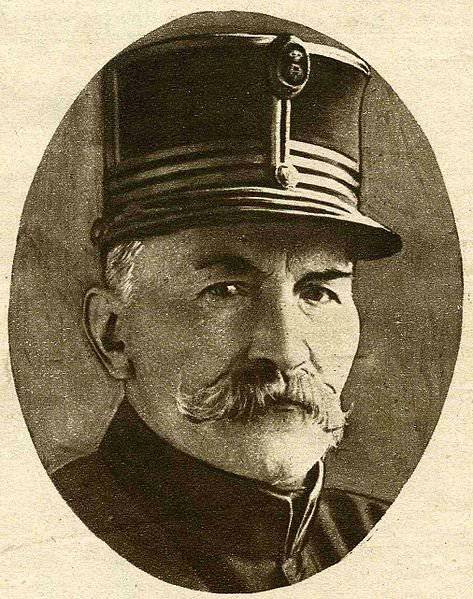
Gerard Lehman
Other units of the Belgian army just did not have time to turn around on the Meuse. It was decided to create another defensive line on the Jett River, 40 kilometers east of Brussels.
The problem was that the Belgians were late with military preparations. After the start of the war, Belgium declared its neutrality (it was a neutral country, which was confirmed by European agreements). But 2 August 1914, the German government presented an ultimatum to Belgium with the requirement to pass German troops through the country (they were promised to withdraw after the end of the war), only 12 hours were given to respond. It was a shock for the Belgian government. The next day, the Belgian leadership announced the refusal, after which the German Empire declared war. In Belgium, mobilization began. Work on digging trenches between the forts in Liege began only on August 2, in order not to give the Germans a reason for war. On the same day began to demolish the house and cut down trees, for a better view when shooting.
In the plans of Berlin, Liege held a special place. Here were located the main motes through the Meuse, an important railway junction. Without seizing the fortress, it was impossible to advance further and fully deploy the strike force. 4 August German troops crossed the German-Belgian border and invaded the country, the first clashes began. The combined detachment of General Otto von Emmich as part of the 6 infantry brigades from the 2 Army and the 2 Cavalry Corps (3 cavalry divisions) Georg von Marwitz participated in the offensive. This group was called the Maa army, it was originally about 60 thousand people and 124 guns.
German cavalry, cyclists and infantry in cars knocked down border posts and rushed to occupy the bridges - Liege was in 30 km from the border. The Belgians fought off the first attempt to seize the crossing, but in the evening the German cavalry forced the river at Wiese. The German command made a mistake and decided to take the fortress 5 of August with a surprise attack. 5 August after the artillery barrage, which did not harm the Belgian fortifications, the Germans went to the assault and were repulsed with heavy losses. The fire of batteries and machine guns advanced connections were simply destroyed, in a number of places where the Germans, despite the terrible losses, were able to break through to the fortifications, they were swept away with fire from machine guns and rifles. Only at Fort Barshon did the Germans manage to engage in bayonet fighting, but the Belgians beat off the onslaught here as well.
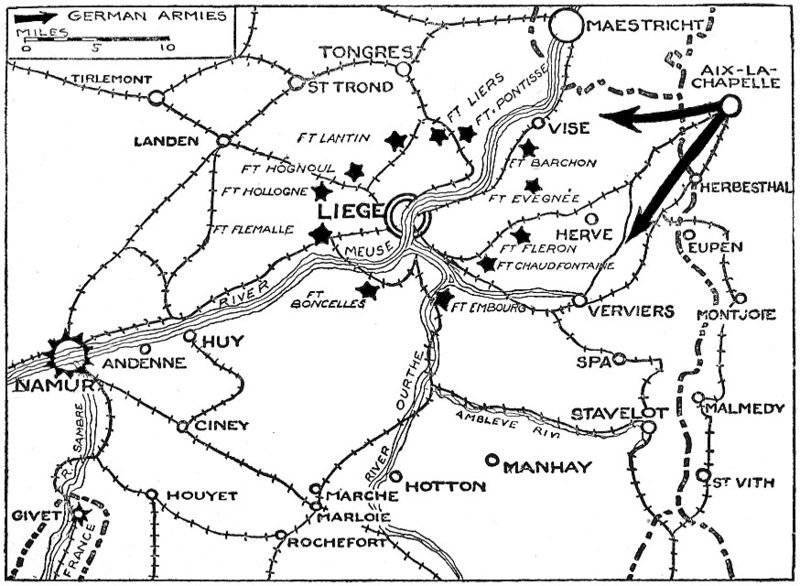
Sturm of Liege.
In Belgium, they exulted, the first battle was after them, there were even offers to go on the offensive, but in the end they wisely refused. The Germans were rescued by a talented General Staff representative Erich Ludendorff. On the night of the 6, the Germans decided to repeat the attack. Ludendorff headed the 14 Infantry Brigade instead of the killed commander Von Wussow. The brigade broke through between the forts of Fleuron and Evenier, the Belgian forts, fearing to cover their troops, did not open fire. The Germans went to the city and the river. Ludendorff sent envoys to Lehman, demanding the surrender of Liege. The Belgian general was taken aback, he did not think about the counterattack, and since the German troops were already in the ring of fortifications, he decided to withdraw the division to the other side so that it would not be cut off from the main forces. The Germans followed the retreating Belgians entered Liege, and Ludendorff himself almost died (or was not taken prisoner). He drove to the central citadel of the city, thinking that she was captured. Seeing the Belgians there, Ludendorff instantly oriented himself and took it in vain - demanded an immediate surrender. The panicked Belgians surrendered. So the Germans took Liege and several crossings across the river. But the main ferries were under fire forts, which continued to hold the defense. And there was no possibility to ship the main forces to the other side.
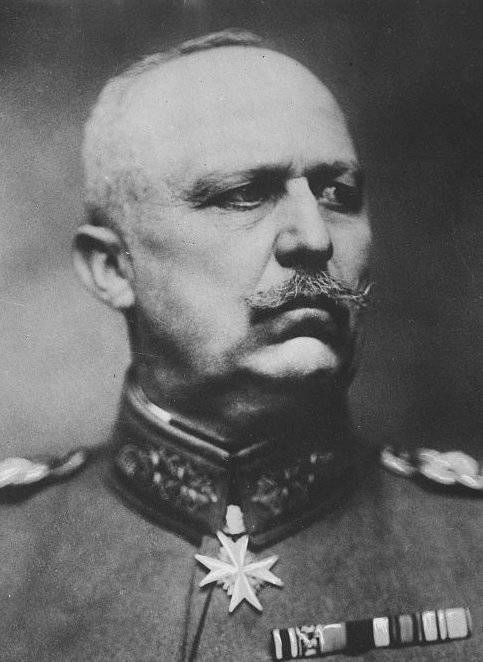
Erich Ludendorff.
Ludendorff did not storm them and caused siege artillery. The Germans offered to the Belgian king to come to an agreement, but he refused and asked for help from the allies. But the French command blindly continued to operate within the framework of the old plan - they were preparing to throw at the Rhine. Numerous warnings, including the commandant of the French fortress Maubeuge-Fournier (he was eventually accused of panic and removed from his post), were ignored on the danger on the left flank. The French General Staff expressed the opinion that "there will be no main attack through Belgium." 5 August the French conducted a private operation in Alsace, it began successfully, but in the end the French were repulsed.
The German cavalry Corps Marvitsa tried to break through the line of the river Zhet, but was repulsed with great losses. The Belgians again rejoiced, they say, there was a "decisive battle of the war", the Germans will not go further. According to them, "forts will last forever." The number of Maa army brought to 100 thousand, still 10-th infantry took the fort Barshon. 12-th siege artillery arrived: 420-, 380-, 210-mm guns. 420-mm "Big Berta" (or "Fat Berta") beat 9-13 km (depending on the type of projectile) 810-kg projectile. On the Western Front, they were called "assassins of the forts," armor-piercing shells pierced two-meter overlaps of steel and concrete - any fortifications of that time. These guns buried all hopes of the Belgians for the power of fortifications. Before the explosion, the Big Bertha missiles penetrated deep into the ground, and the shock wave shook the fortifications to the ground. The shells destroyed not only the forts and fortifications, but also undermined the morale of the garrisons, which from constant shelling reached a state of shock. 13-14 August fell northern and eastern forts. By 16-mu all the forts were captured, on this day the last one fell - Lonsen, when he was captured, the injured General Lehmann was also captured.
17 August German troops launched a general offensive, it was planned to launch 15. Therefore, Liege detained the Germans for only two days.
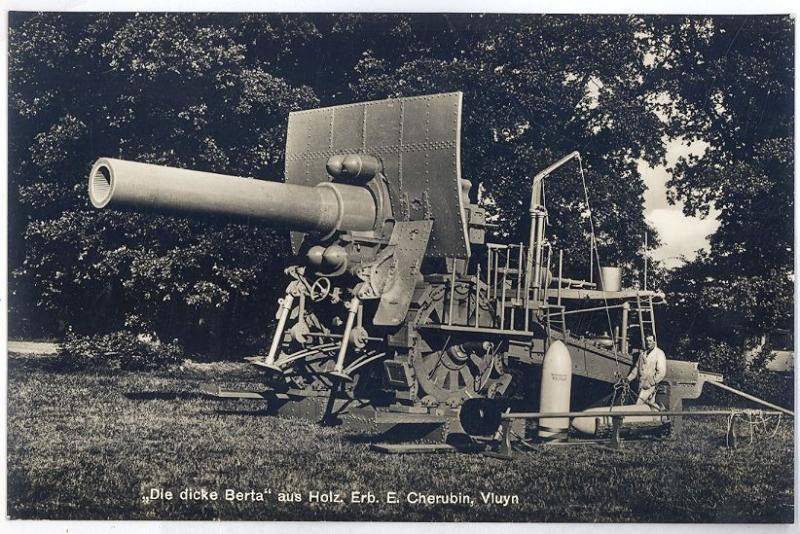
Fighting in Belgium and on the German-French border
Von Kluck’s 1 Army marched on Brussels, Von Bülow’s 2 Army and Von Hausen’s 3 Army to the French border. The German offensive was swift, a small Belgian army could not stop the German corps. By August 18, the advancing German forces and the Belgian forces began fighting, as a result of which the Belgians retreated over the River Diel. 20 August retreating Belgian formations led by King Albert approached Antwerp. The French proposed to Albert to withdraw the troops to Namur, but he decided that there his army would be cut off from the north of Belgium and driven out to France. Part of the German forces from the 1 Army von Kluck identified for blocking and subsequent siege of Antwerp. The city was protected from all sides by several dozens of small forts and two defensive lines, it lasted until October October 9. On August 20, units of the 1 of the German army occupied Brussels (the Belgian government fled to French Le Havre), and several divisions of the 2 army blocked Namur. The Germans imposed a contribution in 500 million francs to Brussels and the province of Brabant.
Namur was considered a powerful fortress, of about the same rank as Liege, believed that it was possible to hold out there until the approach of the French. The siege of Namur lasted only a few days. The German armies took the line Brussels - Namur - Dinan.
14 August, the French army launched its main offensive in Lorraine. It had a great symbolic significance for the French - the territories of the provinces of Alsace and Lorraine were captured by the Germans from France in 1871 year, after the defeat in the Franco-Prussian war. The French troops initially managed to dive into the territory of Germany, repel Saarburg and Mulhouse. The 6-I and 7-I German armies had orders to retreat, luring large French forces into a “bag”, which the armies of the right flank must close. The Germans carried out this order reluctantly, upset that they had to retreat, and not beat the French. The capture of 18 August Saarburg provoked jubilation in France, talking about victory.
But at this time the Germans captured Belgium, the Border Battle began, the French command had to actively move troops towards the breakthrough, to the north. As a result, by the end of August, the French troops retreated to their previous positions, leaving the Germans a small part of the territory of France.
The strategy of the French High Command was failed ...
Director: N. Smirnov. German atrocities in Belgium - page of the First World War unknown in Russia. Why the Russian Tsar, with all his desire, could not prevent the war, even at the cost of betraying the Serb brothers. Why Russia entered the war without waiting for the end of mobilization.
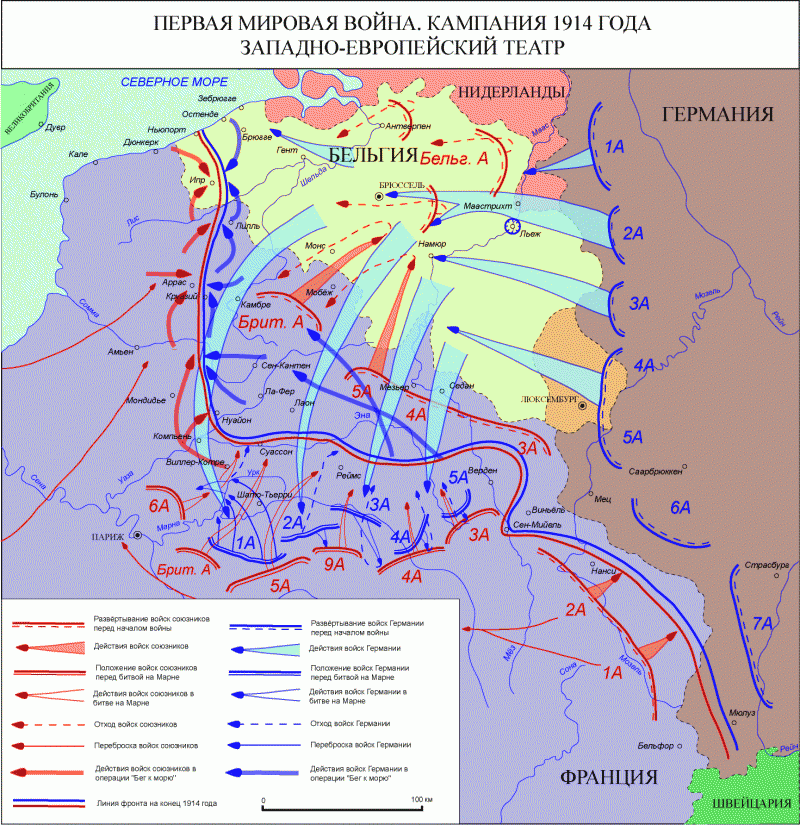
Information